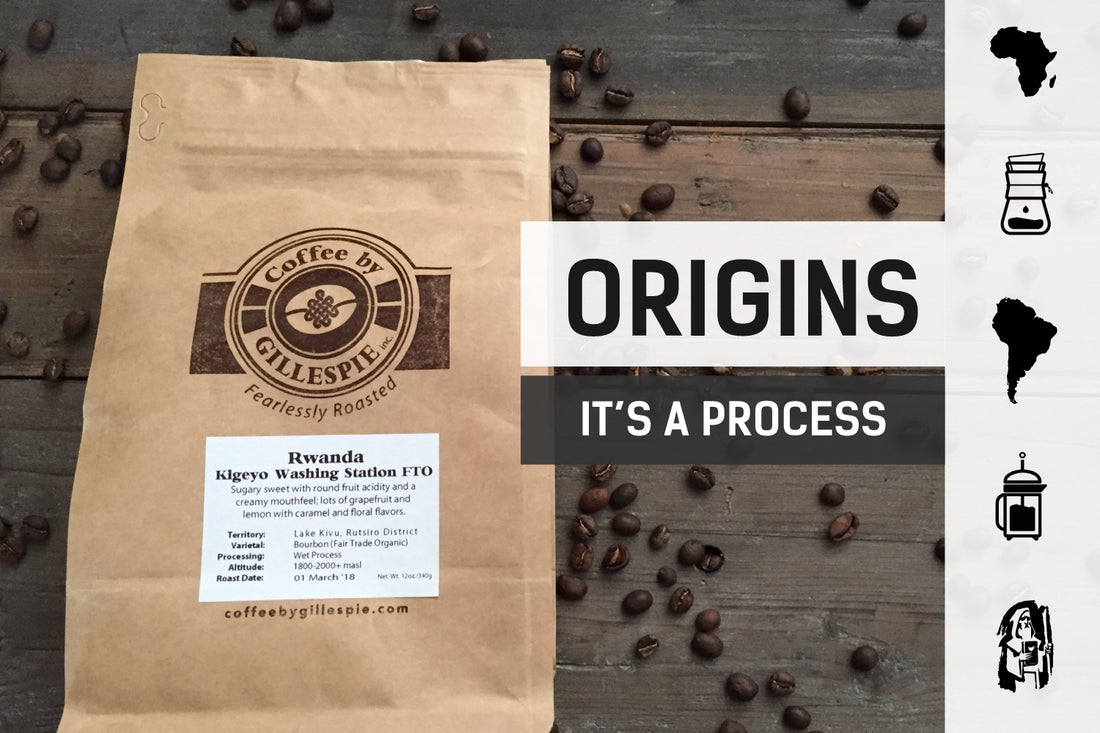Have you recently read the label on the front of your bag of fearlessly roasted coffee? On that label, you will find everything you need to know about the origin of your coffee. Information such as the country, territory, varietal, processing, and roast date may be found on the bag. All of these characteristics play a role in the development of the flavor profile of your coffee.
Location and variety of the coffee plant cultivate notes of flavor as roast date establishes the freshness of the beans. But, what role does processing play in the taste of your brew?
Processing is the means by which the seed is extracted from the coffee cherry. During the harvest season, coffee farms spring to life. The ripe coffee cherries are commonly picked by hand and gathered for processing. Inside each little red cherry is a pair of what we know as coffee beans encased in the fruit’s pulp and wrapped in a bright red skin. These green beans, or un-roasted coffee beans, are now ready to be shipped to coffee roasters for the final steps before making their way to your morning mug. Two of the most common practices of processing the harvested cherries are natural or dry processing and washed processing.
The natural or dry process is the oldest method of removing the seeds in the coffee industry. In this process, the whole cherries are set on a large surface and naturally dried by the sun. This method is used especially where there are water shortages, such as Ethiopia. According to the National Coffee Association, the fruit dries for approximately 20 days in the sun until it reaches a moisture content of 11 percent. The seeds are then removed and ready to be roasted. This process tends to produce a bean which has more bold and fruity notes.
The washed process begins by removing the outer layer of the coffee cherry while leaving the pulp and seeds together. Water is used in this process to separate the pulp and seeds and then in the fermentation of the seeds after the pulp has been removed. The green beans are then sent off for a final washing or rinse before dried and sent off to be roasted. The resulting coffee beans from this process can develop chocolate, floral, and more complex flavor notes.
From the altitude, location, species, variety, processing, roast, grind, water, and brewing method, many factors play a role in the range of flavor notes in your coffee. If you want to learn more about processing, grab a Fearless Flight. Or keep an eye out for one of our natural/dry process single-origin coffees.


